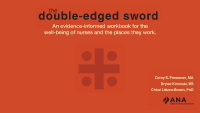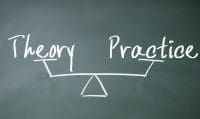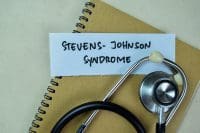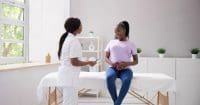When it comes to elderly patients, a slow heart rate may be normal—or risky. Rates as low as 40 beats/minute may be normal and simply result from a decreased response to either epinephrine or beta-adrenergic stimulation. Or such slow rates may result from a dangerous arrhythmia. The key to quickly determining whether your elderly patient’s slow heart rate is harmless or hazardous is listening to the first heart sound (S1).
Understanding S1
When you hear S1, you’re listening to the sound of the mitral and tricuspid valves closing. To best hear S1, listen at either the fourth intercostal space to the left of the sternum (the left lateral sternal border) or the fifth intercostal space at the midclavicular line (the apex). Because S1 is a high-frequency sound, you’ll hear it best by firmly pressing the diaphragm of your stethoscope against the patient’s chest.
The intensity of S1 varies with the shape and thickness of the chest wall. It’s loud over a thin chest and soft over a barrel chest. The positions of the mitral and tricuspid valves before they start to close also change the intensity of S1. These positions before closure depend on the length of the PR interval before the QRS complex. With a short PR interval, the wide-open valves close suddenly, causing a loud S1. With a long PR interval, the open valves take a longer time to float closed, resulting in a soft S1. Thus, the shorter the PR interval, the louder the S1; and the longer the PR interval, the softer the S1.
Seven reversible causes of dementia in older adults
Dumped: When nursing homes abandon patients to the hospital
Geriatric assessment: Essential skills for nurses
Recognizing normal sinus rhythm
When you listen to the heart of a patient with normal sinus rhythm, you hear an S1 that’s equally loud with every beat. The heart rate is between 60 and 100 beats/minute, and the rhythm is regular. On an ECG, the PR interval is normal—between 0.12 and 0.20 second. A P wave appears before each QRS complex, and the QRS complexes are narrow (< 0.12 second). Knowing this, you can estimate the length of the PR interval without reading an electrocardiogram (ECG).
Identifying sinus bradycardia
When you listen to the heart of a patient with sinus bradycardia, you hear an S1 that’s equally loud with every beat—just as you do with normal sinus rhythm. The heart rate is between 40 and 60 beats/minute. The rhythm is usually regular, but it may become irregular at the slower heart rate.
On an ECG, the PR interval is normal—between 0.12 and 0.20 second. The electrical impulse originates at the sinus node, so a P wave appears before each QRS complex. The QRS complexes are narrow (< 0.12 second). (See Comparing ECGs.) Common among the elderly, sinus bradycardia may occur during sleep and with severe pain, inferior-wall myocardial infarction, and drugs such as digitalis and beta blockers.
Elderly patients with healthy hearts tolerate slow heart rates well. Those with severe heart disease, however, may not be able to compensate for a slow rate, leading to low cardiac output. Unless the patient has signs and symptoms of poor perfusion, observation is the only intervention. If the patient does have signs and symptoms of poor perfusion—acute altered mental status, ongoing chest pain, hypotension, or other signs of shock—he’ll need a pacemaker. Before the patient receives effective pacing, 0.5 mg of atropine I.V. may be prescribed. This dose may be repeated to a total dose of 3 mg. Or 2 to 10 mcg/minute of epinephrine I.V. or 2 to 10 mcg/kg/minute of dopamine I.V. may be prescribed.
Identifying complete heart block
When you listen to the heart of an elderly patient with complete heart block (third-degree atrioventricular block), you hear an S1 whose volume changes with each beat. It may be soft, intermediate, or loud. The heart rate is between 20 and 40 beats/minute, and the rhythm is regular but slow.
On the ECG, there’s no relationship between P waves and QRS complexes. Thus, the PR interval varies, causing the loudness of S1 to vary. In a complete heart block, there’s no conduction between the atria and ventricles. Under the control of separate pacemakers, the atria and the ventricles function independently of each other. The atria stay in sinus rhythm, so the P waves appear at a rate of 60 to 100 beats/minute. The ventricles usually maintain a rate of 20 to 40 beats/minute, and broad QRS complexes appear on the ECG.
In the elderly, complete heart block usually results from heart disease or drug toxicity. It also may result from an injury to the electrical conduction system during heart surgery. Complete heart block may be a medical emergency, with severe signs and symptoms of poor perfusion, shock, and a serious risk of cardiac arrest. A patient with poor perfusion will require a pacemaker.
Listen
The next time you detect a slow heart rate in an elderly patient, keep in mind that you don’t need an ECG to investigate further. A skilled sound assessment of the patient’s S1 can tell you whether he or she has a harmless type of sinus bradycardia or a dangerous complete heart block.
Selected references
Cheitlin MD. Cardiovascular physiology—Changes with aging. Am J Geriatr Cardiol. 2003;12(1):9-13.
Erickson BA. Heart Sounds and Murmurs Across the Lifespan. 4th ed. St. Louis: C.V. Mosby; 2003.
2005 American Heart Association Guidelines for Cardiopulmonary Resuscitation and Emergency Cardiovascular Care. Circulation. 2005;112(suppl I):IV 67-69.
Barbara A. Erickson, RN, PhD, APRN, CCRN-R is a Clinical Information Research Analyst for the Department of Medicine, Research, and Education, Inc., in Youngstown, Ohio.



















2 Comments.
I will be 95 in October. I exercise five days a week for 30 minutes just after Bible study seven days a week. I am a lacto-ovo vegetarian, do my own cooking, cleaning and tend to plants, vegetable and non-producing plants. Still drive, shop, attend church
and Bible Study, and have no help,,,,yet!
At rest my pulse is about 40 or so, a steady pulse. I have no chronic pain and get a good night’s rest, from 9 pm to 5 am, getting up once and back to sleep. I wa. On er Ed about my slow pulse but guess it is normal at my age.
I ma 64 years old woman.now i live alone .cos my husband died a few years old cos of AD.but i am no longer sorrow.i learned to be my own.sometimes i watch my children and grandsun.i love them all.i like hang out with my friends .sometimed we play poker.sometimes we just chat with a cup of herbal tea.i like walking .but i have high blood pressure too.so i now check my blood pressure every day.every morning when i wake up and evry night before i sleep.i use this little product ”
Echo80″it has lots of functions.cho Blood Pressure(BP) measure and monitor for adult,pediatric, and neonatal. It most stores 300 records of common user and 358 of ambulatory Blood Pressure data. Every record includes the detailed measure time, systolic blood pressure,diastolic blood pressure, mean blood pressure, pulse rate, error message and record number..i recomment this product to everyone who cares about themseves and their family.i hope everyone with kind heart could be healthy and happy.here is their email:mdm@meditech.cn